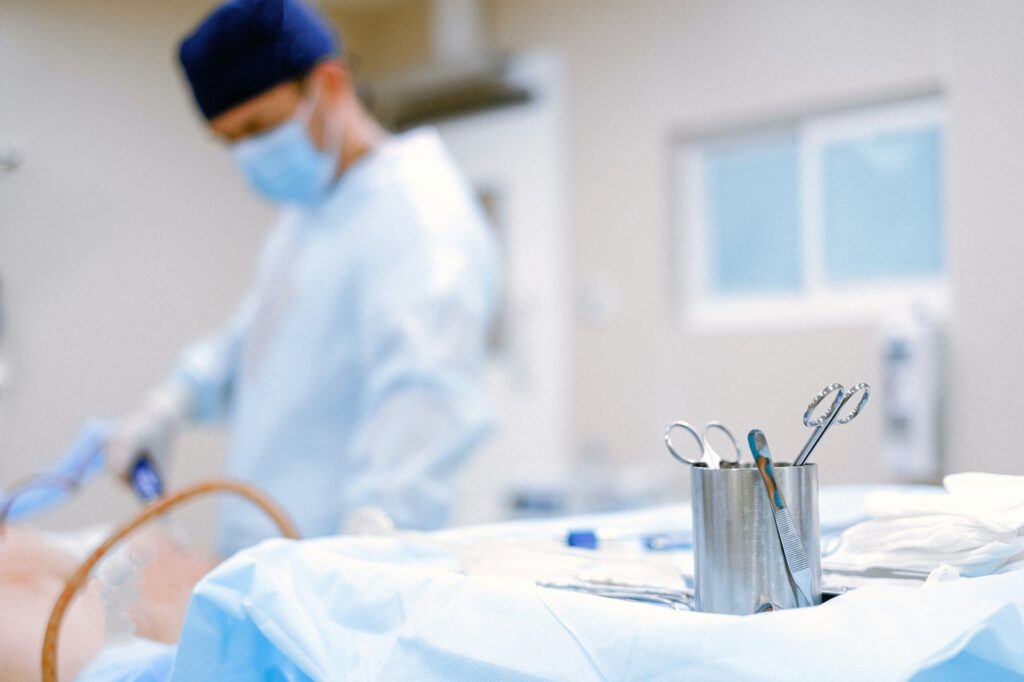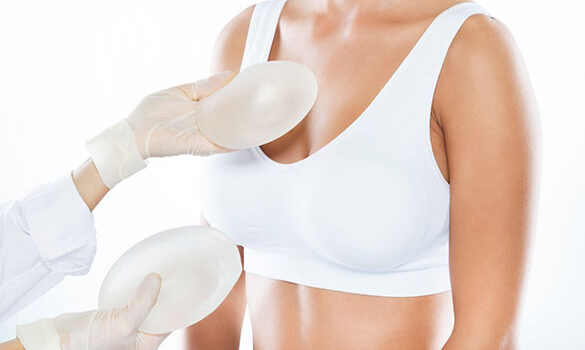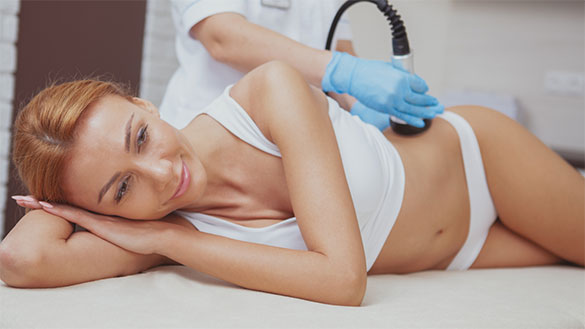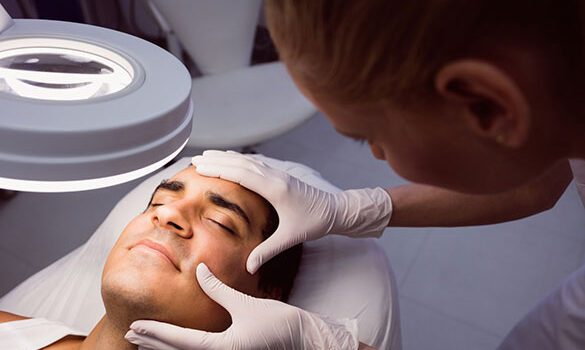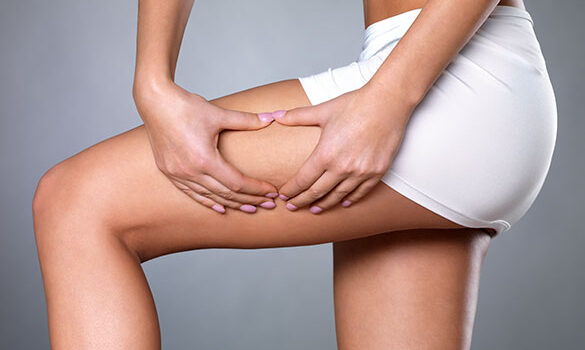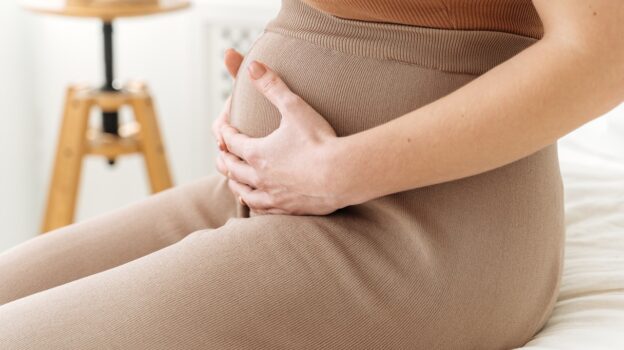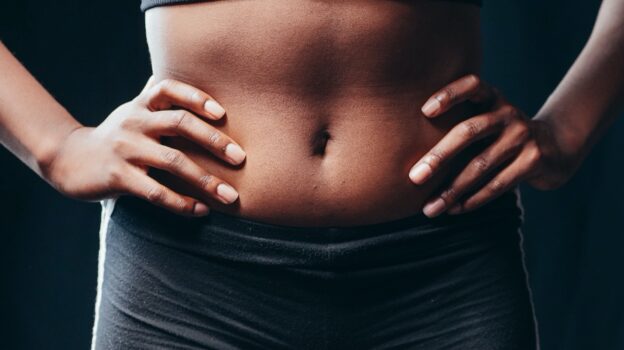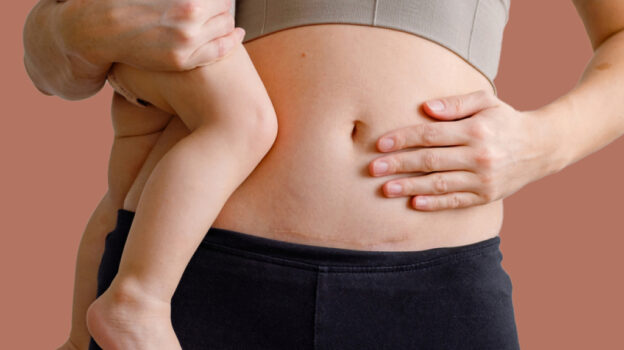Credit: Anthony Shkraba via Pexels
Liposuction is a surgical procedure that removes stubborn fat deposits and can be used on various parts of the body, including the upper arms, thighs, abdomen, chest, hips and neck.
People usually turn to liposuction to help get rid of fat that has stuck with them, even after making improvements with their diet and exercise. The procedure can effectively withdraw these tenacious fat deposits and give patients a more contoured figure.
Liposuction has been popular for decades and is a commonly performed procedure, however, many are still left wondering, is liposuction safe? The short answer is, yes, liposuction is safe. The procedure is incredibly popular, and problems during the operation and recovery are uncommon.
At GraceMed, we offer liposuction in Mississauga, Burlington, and North York. If you’re interested in getting liposuction at one of our clinics but have questions surrounding its safety, read ahead to get some peace of mind and learn how you can make your liposuction surgery as safe as possible.
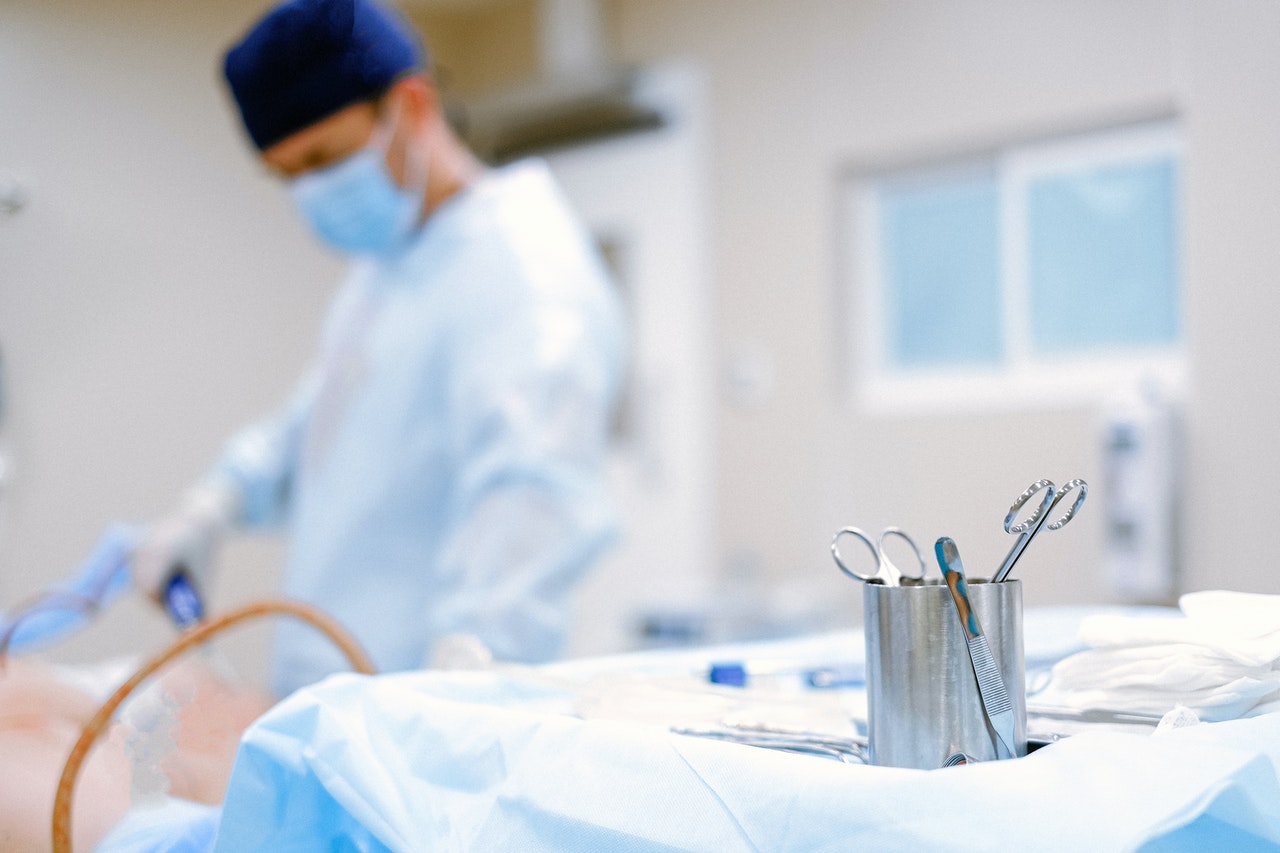
Credit: Anna Shvets via Pexels
Is Liposuction Safe?
Liposuction is, in fact, safe. Because the procedure isn’t very long or complex, the chances of complications are slim.
That said, as with all forms of elective surgery, there are potential safety risks with both the procedure and the recovery. Liposuction comes with risks like blood loss, blood clots and infection. There is also a possibility that you could have an allergic reaction to the general or local anesthesia during surgery.
These problems are rare, but they still need to be taken seriously. It’s important that you understand these risks before booking your liposuction and are aware of what factors can increase risks for you and impact the safety of the procedure.
Factors That Can Impact Liposuction Safety
Health Factors:
Certain health factors will increase your safety risks. It is not safe for people living with heart disease, diabetes, blood flow problems or weakened immune systems to undergo liposuction. The procedure is not recommended for people who are overweight or obese and it is not recommended for people who smoke cigarettes.
If you are pregnant or intend to be in the near future, you considering planning for the procedure after you have fully recovered from giving birth.
Combining Surgeries:
Combining surgeries can come with a lot of advantages. Instead of spacing out multiple operations, you can get them all done in one appointment and can take less time off from work or school to recover. In some cases, you can even save money.
That said, it is important to note that combining surgeries will usually take more operation and recovery time. This doesn’t mean that combination surgeries are unsafe. Plastic surgeons are prepared for the additional risks that come with these types of procedures and patients are heavily monitored by the surgeons, as well as a trained anesthesiologist, throughout the operation.
After the operation is over, surgeons send the patients home with detailed a recovery plan. That recovery plan includes multiple follow-up appointments to ensure proper healing.
If you’re still worried about the safety of combining surgeries, talk to your surgeon during your consultation about alternative arrangements. You could do one surgery and then book another after your recovery, or consider some safe, non-surgical treatments that can give you the results that you’re looking for.
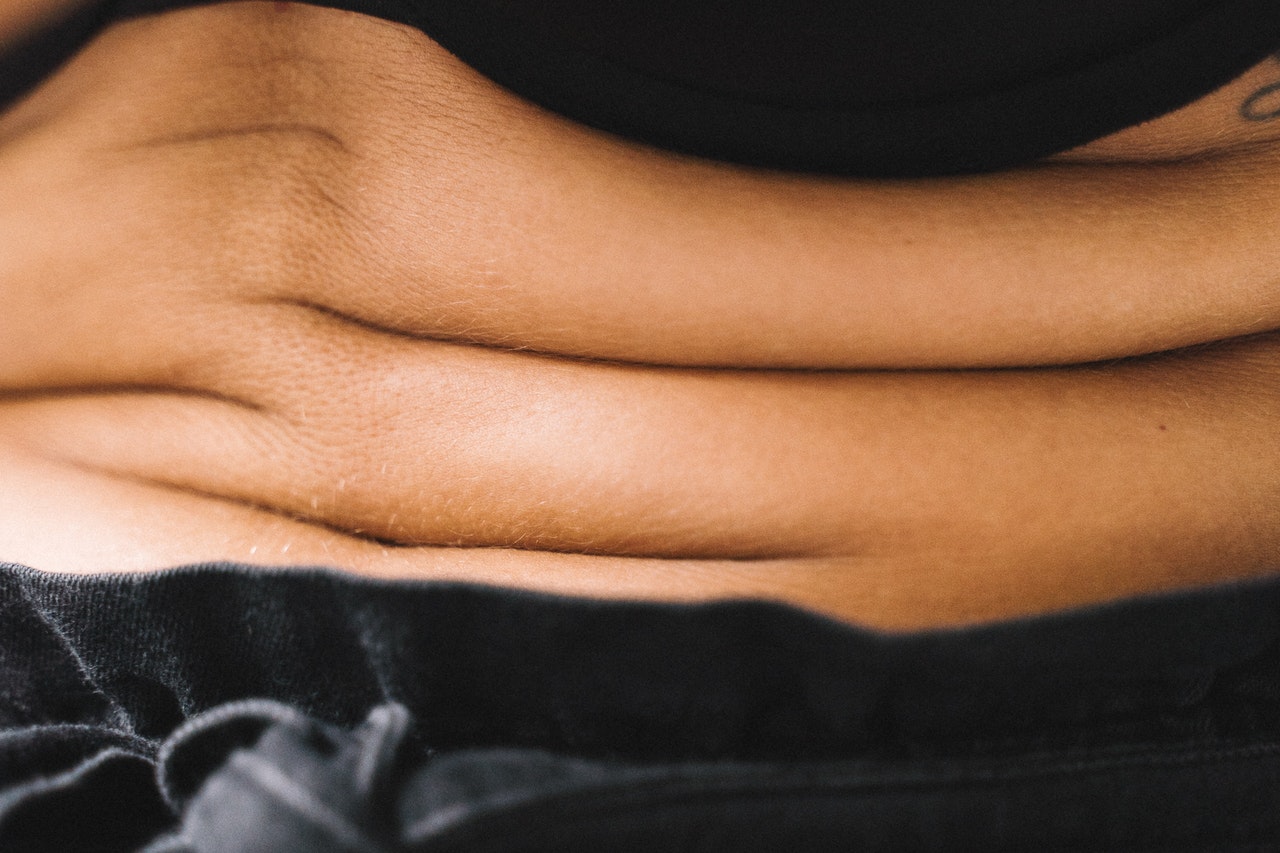
Credit: Anna Tarazevich via Pexels
What Surgeries Are Commonly Combined with Liposuction?
Tummy Tucks:
A tummy tuck (abdominoplasty) is a cosmetic procedure that removes excess fat and skin from the midsection and then tightens the abdominal walls. A surgeon will often use liposuction during this procedure to remove fat from the surrounding area so that it’s more contoured and defined.
Read More: Liposuction vs Tummy Tuck: The Differences and Advantages of Both
Breast Reductions:
Breast reductions remove excess skin and fatty tissue from the breasts, giving them a more proportionate size and shape. A surgeon can use lipo for breast reduction for patients that have breasts that are mainly composed of fatty tissue. Liposuction can also be used in tandem with breast reduction surgery to remove fatty tissue near the sides of the breasts.
Mommy Makeovers:
A mommy makeover procedure is a customizable combination of cosmetic surgeries. The makeover can include a breast lift, a breast augmentation, a tummy tuck, liposuction and more. It’s designed for women who want to rectify some of the changes that motherhood made to their bodies (for example, drooping breasts).
Factors That Can Improve Liposuction Safety
Picking the Right Surgeon:
The best way to reduce the health and safety risks with any surgery is to pick the right surgeon. GraceMed, for one, has board-certified surgeons that specialize in a variety of procedures, including liposuction.
We are a part of multiple medical associations, including the Canadian Society of Plastic Surgeons, the Canadian Society of Aesthetic Plastic Surgery and the Royal College of Physicians and Surgeons of Canada. Our clinics are staffed with professionals that have the education, experience and credentials to perform safe and effective surgery.
Picking an uncertified, inexperienced surgeon can be a decision that could leave you with poor surgical results and serious health issues. This is a common problem associated with medical tourism. People book surgery in different countries where the procedures have shorter waiting lists and lower prices. Unfortunately, many of these clinics have unqualified surgeons that put their patients in danger.
Confirming That You’re a Good Candidate:
Another good way to minimize the safety risks of liposuction is to make sure that you’re a good candidate for it. Your surgeon will talk to you about the ideal qualities that candidates should have for liposuction during your surgical consultation.
You may be a good candidate for liposuction if you meet the following qualifications:
- You are an adult over the age of 18
- You are within 30% of your ideal weight
- You have firm, elastic skin
- You have good muscle tone
- You are in good health and don’t have any serious medical conditions/illnesses
- You do not smoke cigarettes
Following Your Surgeon’s Instructions for Surgery Prep:
Your surgeon may give you instructions to follow in preparation for your liposuction procedure. They will do this to protect your health and prevent problems during surgery. For instance, they might ask you to stop taking certain medications weeks ahead of your surgery date. You should follow these instructions to the best of your abilities.
Following Your Surgeon’s Instructions for Aftercare:
It’s crucial that you follow your surgeon’s instructions for aftercare. These will help your body heal from the surgery and minimize your chances of developing health issues during recovery.
Ignoring their instructions is very risky. For instance, your surgeon may give you antibiotics to stave off infection. An infection can quickly become dangerous if it goes untreated, so you should take the medicine as instructed.
Less Invasive Liposuction Techniques:
Invasive procedures come with more safety concerns. They take more time to complete, and they cause more trauma to the body. Increasing the time that your body undergoes surgery and recovery, increases your health risks.
On the other hand, choosing a less invasive procedure will minimize those risks. So, if you want to get liposuction, you can feel safe choosing a minimally invasive technique like Body Jet Lipo, SmartLipo and SlimLipo.
Body Jet Lipo
Body Jet Lipo is water-assisted liposuction. Conventional liposuction uses a cannula to loosen fat and then vacuum it out. This version uses a jet of water to irrigate the fat and remove it from the desired area.
The technique is gentler on the body than conventional liposuction. It causes less tissue trauma during the procedure and minimizes the risk of blood vessel damage. This means that you will have less post-operative swelling, pain and bruising, and your recovery time will be faster.
Body Jet Lipo can also reduce safety concerns about surgery. The treatment time is shorter, which means you will spend less time under general anesthesia. You can even opt for a local anesthetic over a general one.
Smart Lipo
Smart Lipo is a form of laser-assisted liposuction. Your plastic surgeon will use laser energy to liquefy the fat deposits, making them easier to suction and remove. It’s often used on small areas that require additional precision and care, like the upper arms or “love handles” (fat around the hips).
Laser-assisted liposuction (laser lipolysis) has some unique benefits. The heat from the laser stimulates the skin and promotes collagen growth. This can leave the patient with smoother, younger-looking skin after they’ve recovered, which is a relief for anyone concerned about having loose skin post-surgery.
The laser’s heat seals blood vessels during the procedure, which means there will be minimal bruising/swelling to recover from. The laser’s heat also makes the surgery safer, as it seals blood vessels during the procedure. By sealing the blood vessels, the surgeon minimizes your chances of bleeding and going into shock.
Slim Lipo
Slim Lipo is another technique that uses lasers to liquefy stubborn fat deposits and remove them from the body, all while tightening and smoothing the skin. It requires less recovery time than conventional liposuction and minimizes post-operative side effects like bruising and swelling.
To learn even more about the different types of liposuction, check out our blog post!
Safety After Liposuction
There will be some side effects after you undergo liposuction, like swelling, bruising, numbness and irritation. You may also notice some contour irregularities and baggy skin around the treated area.
These side effects are completely normal! They pose no serious threat to your health and safety, as they’re temporary and should fade as you go through recovery.
However, there are things that you can do to speed up your recovery and minimize these side effects:
Take Care of Your Health:
Your body will have an easier time recovering when you take good care of it. After your surgery, get plenty of rest. Drink lots of water. Eat a wholesome diet. Do not drink alcohol or smoke cigarettes.
Strenuous exercise isn’t recommended. You will have to wait between 2 to 6 weeks before returning to your normal exercise routine. Wait for the green light from your surgeon before jumping back into it.
In the meantime, you should go for light walks. Not only is walking a simple, low-impact exercise, but it’s also an effective recovery tool. It increases your blood flow, reduces swelling and prevents blood clots from forming.
Wear Compression Garments:
Your surgeon will encourage you to wear compression garments after your surgery. Compression garments increase blood flow and prevent internal fluids from building up — this is what causes swelling. Wearing these garments for a certain period of time will help you control any swelling, and it will help your skin contract to the new contours of your body.
Using Renuvion:
If you’re concerned about getting loose or baggy skin, you can ask your surgeon to include a Renuvion treatment with your liposuction. Renuvion (formerly called J-Plasma) is a minimally invasive skin rejuvenation treatment that uses cold plasma energy to stimulate collagen and tighten the skin. It’s commonly paired with liposuction to make sure that you have smooth, firm skin to match your new contours.
Non-Surgical Alternatives to Liposuction
If you’re still worried about undergoing surgery, you should look into non-surgical body contouring. Treatments like CoolSculpting are safe and can target many of the same problem areas as liposuction. However, unlike liposuction, you will have to undergo several non-surgical body contouring sessions to get optimal results.
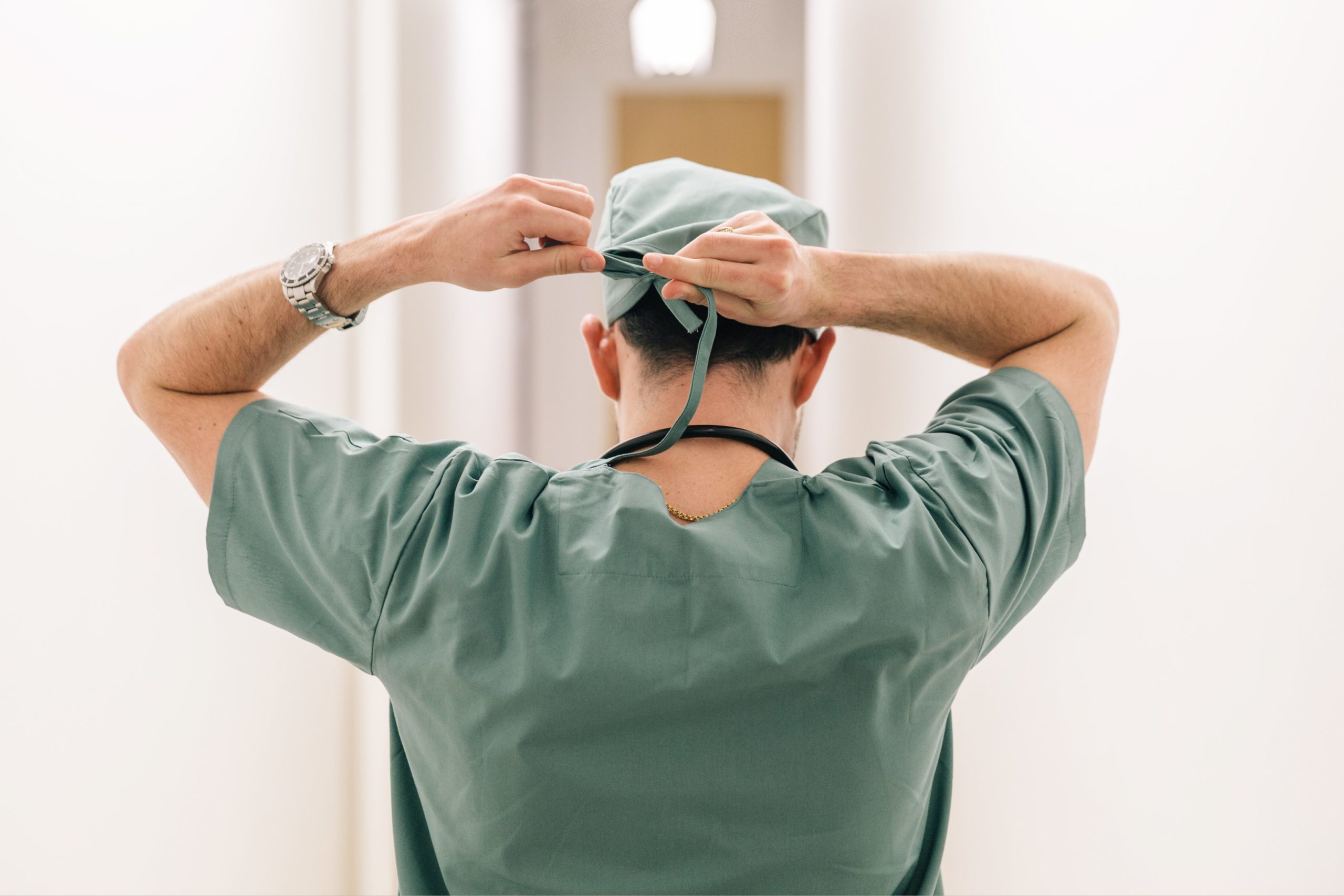
Liposuction at GraceMed
If you’re interested in liposuction, the specialists at GraceMed are happy to assist you and provide you with any information you may be seeking.
You can book your consultation at our Mississauga plastic surgery clinic and discuss your plans with one of our surgeons. They will go over the steps of the liposuction procedure with you and answer any of your questions and concerns. This service is also available at our clinics in North York and Burlington.
If you are looking for other treatments instead of or in addition to liposuction, our clinics offer other types of plastic surgery that could interest you. You can discuss these additional options in your surgical consultation.
Liposuction is a safe cosmetic procedure, especially when it’s performed by the right surgeons. You’re in good hands at GraceMed.


